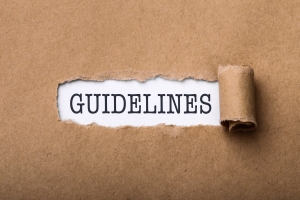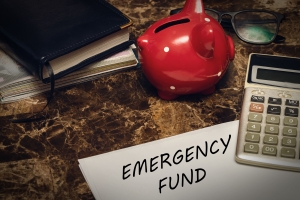...
Understanding Bonds And Their Risks
Bonds are fixed income investments which allow an investor (the holder) to lend money to a government (issuer) or another entity (issuer) for a set period of time. Bonds are described as fixed income because investment in bonds earns fixed payments over the life of the bond. Bonds are often issued by governments and corporate entities. Corporate entities issue bonds to fund existing operations, brand-new initiatives, or acquisitions. Governments sell bonds to raise money and complement their tax revenue. By purchasing a bond, you become a debtor of the organization issuing the bond.
In a bond contract, the issuer owes the holder a debt and is required, depending on the terms, to pay the bond's creditor cash flow (also known as principal) at the bond's maturity date as well as interest (also known as the coupon) over a certain period of time. Depending on the economic value that is stressed, the period and amount of cash flow given changes, giving rise to various types of bonds. The interest is typically due at predetermined intervals, such semiannually, annually, and less frequently at various times.
I. Bond Features
- Maturity Date: The date on which the bond issuer returns the money lent to them by bond investors. Bonds have short, medium or long maturities.
- Face Value: Principal or face amount is the amount on which the issuer pays interest, and which, most commonly, has to be repaid at the end of the term. Some structured bonds can have a redemption amount which is different from the face amount and can be linked to the performance of particular assets.
- Coupon: The coupon is the interest rate that the issuer pays to the holder. Coupon rates can be fixed or flexible. For fixed rate bonds, the coupon is fixed throughout the life of the bond. For floating rate notes, the coupon varies throughout the life of the bond. Interest can be paid at different frequencies; generally semi-annual (every 6 months) or annual.
- Yield: The yield is the rate of return on the bond investment. Yields refer to a bond’s coupon divided by its market price. While coupon is fixed, yield is variable and depends on a bond’s price in the secondary market and other factors.
- Price: Bond price is the present discounted value of future cash stream generated by a bond. It refers to the sum of the present values of all likely cash inflows from the bond. Bonds have two prices in the fixed income market; the bid and the ask. The maximum price a buyer will offer for a bond is called the bid price, whereas the lowest price a seller will accept is called the ask price.
II. Risks Associated With Bonds
Bonds are frequently regarded as a secure investment, especially when compared to equities, and can be a fantastic way to create income. However, holders of corporate and government bonds should be aware of any potential risks. The following are some risks associated with bonds:
- Default Risk: The possibility that the issuer of a bond security will not be able to pay interest and/or principal on time and adhere to the terms of a bond indenture is known as credit/default risk. The likelihood of a credit or default risk depends on the issuer's creditworthiness and capacity to pay its debts. Credit rating and yield have a negative relationship. Higher yields are offered by issuers with lower credit ratings in order to offset higher credit risk, and vice versa. The value of the issuer's outstanding fixed-income instruments is impacted by changes in credit ratings.
- Interest Rate Risk: Interest rate risk is the possibility of investment losses caused by an increase in the going rates for brand-new debt instruments. The inverse link between interest rates and bond prices is the first concept a bond buyer needs to comprehend. Bond prices increase as interest rates decrease. Bond prices, on the other hand, often decline as interest rates rise. This occurs because investors strive to lock in or capture the highest rates possible for as long as they can when interest rates are declining. To achieve this, they will purchase current bonds that offer interest rates above the going market rate. Bond prices rise as a result of this increase in demand. The link between yield and interest rate is, nonetheless, favorable.
- ReInvesment Rate Risk: Reinvestment risk, or the risk of having to reinvest proceeds at a lesser rate than what the funds were previously earning, is another threat bond investors face. One of the main ways this risk presents itself is when interest rates fall over time and callable bonds are exercised by the issuer.
- Price Risk: Price risk occurs when an investor does not receive the expected price when selling a bond or other debt security in the secondary market because of a negative fluctuation in prices. Since they must rely on the security's current market price, which may be greater or lower than the price they initially paid for it, investors who want to access the security's principal amount before its maturity date should pay particular attention to this.
III. How Are Bonds Valued?
Bond valuation is a method for determining a bond's potential fair value or price. Bond valuation entails determining the face value or par value of the bond as well as the present value of the bond's future interest payments, sometimes referred to as its cash flows.vA bond's market price is determined by discounting its yield to maturity by the present value of all anticipated future interest and principal payments (i.e. rate of return).
The bond's redemption yield is determined by this relationship, and since there would otherwise be chances for arbitrage, it is expected to be close to the current market interest rate for other bonds with comparable features. Bond prices fall when market interest rates rise and vice versa because the yield and price of a bond have an inverse relationship. This approach of valuing bonds is known as mark-to-market (MTM). A portfolio that is marking-to-market could experience volatility based on market conditions.
---
Axis Pension Trust partners workers throughout their retirement planning journey to ensure they are on track to achieve a dignified retirement. For more information on our services or general enquiries, send an email to This email address is being protected from spambots. You need JavaScript enabled to view it. or call 030 273 8555
How To Develop A Winning Investment Mindset
Investing long-term is tough and maintaining that resolve in the midst of difficult economic times is much tougher. With pressing current financial needs, it is easy to relegate long-term goals like retirement planning to the bottom of our financial agenda. Regardless of how challenging it is, if we stay alive, retirement is inevitable. Having a long-term perspective is essential when it is comes to investing towards long-term goals like retirement. Planning for your retirement requires long term thinking, the ability to prioritize the future and stay committed to achieving the comfortable retirement you desire. The question is how do we develop a long-term mindset?
Cultivating a long-term mindset requires discipline. One of the main reasons for financial problems is the lack of discipline. The inability to delay gratification in the short-term may cost you your long-term goals such us retiring comfortably. Also reacting adversely and aborting your plans midway due to challenges can also stand in the way of achieving your goals.
In the face of uncertainties, investors need to be resilient. This is the ability to recover from your own mistakes and difficulties beyond your control. One of the basic concepts of investment is risk and return. Risk is the probability that actual returns will differ from what is expected. Every investment carries some level of risk. To cultivate a long-term mindset and achieve retirement goals, an investor must anticipate and prepare adequately for tough times and be ready to take advantage of opportunities that may arise.
To develop a long-term mindset, you need to have a compelling reason for investing i.e. why are you investing towards your retirement? Investing just for investing sake is not enough. Being disciplined and resilient becomes easy when you have purpose for investing. Set financial goals that are important to you instead of following the crowd so that you are inspired and motivated to still pursue them even when times get tough.
Developing a long-term mindset requires patience, the ability to not be worried or distracted by short-term volatility in the value of the investment and stay invested for long-term regardless of difficulty. It is important to stay focused on the bigger picture.
Having a purpose, being disciplined, resilient and patient are essential requirements for investing in uncertain times. Taking a long-term perspective may help you avoid emotional choices, avoid unnecessary losses and grow wealth over time with small sums invested regularly. History has shown that having long-term mindset increases your chances of yielding positive returns.
---
Axis Pension Trust partners workers throughout their retirement planning journey to ensure they are on track to achieve a dignified retirement. For more information on our services or general enquiries, send an email to This email address is being protected from spambots. You need JavaScript enabled to view it. or call 030 273 8555
Understanding Investment Risk
Assuming Mr. Osei takes a loan from Mr. Azumah at 20% per annum for the next 5 years to expand his business. By giving the loan, Mr Azumah is investing in Mr. Osei’s business with the hope that he will receive interest and his principal as promised. The possibility that Mr. Azumah’s investment will not meet that expectation is termed risk. In our everyday activities we are exposed to all sort of risks and the same applies to investments. Every investment has some level of risk. Unfortunately, we tend to focus more on the potential without understanding the potential loss that could occur. It is important to consider all risks you may be exposed to when investing.
There are two main types of risks associated with investment: systematic and unsystematic risk. Systematic risk is the risk that impacts the market as a whole e.g. inflation, changes in interest rates, cedi depreciation etc. This kind of risk is normally difficult to avoid and diversify. Unsystematic risk is the risk specific to a particular company or asset. In 2022, we witnessed a clear example of systematic risk fueled by the geopolitical tensions caused by Russian-Ukraine war and aftermath of COVID 19. Beyond these broad categories there are some other risks that may affect your investments.
Credit Risk
Credit risk is the risk that a borrower will be unable to make the principal and interest payment on its debt obligations. Holders of bonds are exposed to credit risk due to the contractual arrangement. Normally government bonds have the least amount of default risk and hence should normally have the lowest returns. Corporate bonds tend to be more risky but also have higher return expectations. Currently, Ghana’s government bonds are exposed to credit risk due to government’s inability to fund its obligation hence the introduction of the Debt Exchange Program which is short of investor’s return expectations.
Country Risk
Country risk refers to the risk that a country won't be able to meet its financial obligations. This may adversely affect the performance of the country’s financial securities such as stocks, bonds, mutual funds etc.
Foreign-Exchange Risk
Investing in foreign denominated assets or in a foreign country exposes your investment to foreign exchange risk. The investor needs to consider the effect of changes in currency exchange rates on the value of their investment. If you live in the Ghana and invest the US stock market or buy Eurobond or an asset priced in dollars even if the value appreciates, you may lose money if the US dollar depreciates against the Cedi.
Interest Rate Risk
Interest rate risk is the risk that an investment's value will change due to a changes in interest rates. When interest rates rise, the value of pre-existing bonds and other fixed income securities in the secondary market fall due to more attractive rates for new bonds thus increasing the opportunity cost of holding those. The opposite is true when interest rates fall. Bonds with longer maturities are more exposed to interest rate risk.
Liquidity Risk
Liquidity risk is measures how easy it is for an investor to trade in their investment into cash. The more difficult it is, the more illiquid the investment is. For example, real estate is normally more illiquid than treasury bills. Investors will normally expect higher returns for more illiquid securities. Investors are normally advised to have some liquid assets as part of their portfolio so that they are not forced to sell illiquid assets at a loss.
Inflation risk
Inflation is the general increase in the prices of goods and services or the fall in the purchasing power. Inflation risk is the probability that inflation will reduce the performance of your investment. One of the reasons for investing is to protect the purchasing value of your funds. When inflation high, it reduces or completely wipes of the real returns making investing less desirable.
As mentioned earlier, every investment has some level of risk associated with it. Normally investments with low risk have low potential returns and vice versa. In making investment decisions, investors must determine how much risk they want to take for a desired return. Factors like age, income levels, investment goals, liquidity needs, time horizon, and personality need to be taken into consideration. It is important to diversify your portfolio by investing in different asset classes to minimize risk.
---
Axis Pension Trust partners workers throughout their retirement planning journey to ensure they are on track to achieve a dignified retirement. For more information on our services or general enquiries, send an email to This email address is being protected from spambots. You need JavaScript enabled to view it. or call 030 273 8555
Habits That Can Be Costly In Making Investment Decisions
A habit is a routine activity that later forms part of our life and tends to occur subconsciously. It is often said habit defines your personality. In the same vein habit can define your investment decisions. Individuals tend to make investment decisions based on their behavior or because of a situation they went through. The following are some few habits that can influence your investment decision.
Over Confidence bias
According to the Corporate Finance Institute, overconfidence bias “is a tendency to hold a false or misleading assessment of our skills, intellect or talent. In short, it is an egotistical belief that we are better than we actually are”. For example, a lot of men will answer in affirmative to a simple question “who manages finances better, men or women?’’ Over confident individuals usually have “I knew it” kind of attitude to everything. The behavior of being overconfidence can lead you to making wrong investment decisions. No matter your level of education you should know that having basic financial knowledge is not accurate in making investment decision. Try to seek expert advice even if you have knowledge about an investment product that you are interested in. You will need to understand the dynamics of investment, the impact of market and economic conditions on investment. Avoid believing that the outcome of every situation must be to your advantage because that is the outcome you desire.
Fear of Change
This behavior is portrayed by people as a result of their past experiences, especially in the investment space. People with this habit are afraid to invest and tend to be very risk averse. They usually develop a negative view about every situation and jump into every loose information which tends to suggest “doom” for their investment. For instance, the rumor of capital restructuring by government coupled with the directive by Securities and Exchange commission on the use of Mark-to-Market valuation has caused a lot of panic withdrawals by individuals who have the fear of change habit. You need to understand that there is no guaranteed situation in the investment space especially with returns. Speak to your financial advisor about every financial information or rumor you come across which you think may impact your investment.
Fear of Action
This habit is usually adopted or shown by people who in one way or the other have made some bad investment decisions due to the influence by friends or family. People with this habit usually need a push from a friend or relative to make a decision. Basically, they are not able to take an “action” on their own. These caliber of people do not do any due diligence or ask the right questions about the company or the investment scheme before jumping unto the investment. Their source of information is friends and family. Fear of action individuals are convinced or need confirmation from friends and family to invest in particular schemes and usually tend to play the blame game if they do not get the desired result. Be very inquisitive about any investment products that are introduced to you by friends and insist on speaking to an expert/official from the company.
Information Overload
People with this habit are always engulfed with information which impairs their decision making. They usually want more information about a particular product before they make a decision. There is a lot of information available in this modern day of technology and digitalization. Financial information can now be found in the print media, through advertisement on radio, TV, all social media platforms and the internet. For instance, a simple search of “Right Investment” on google can give you a lot of result which you might find difficult reading all of them. Information overload may lead you to either make a wrong investment decision or postpone an investment decision. People who feel overwhelmed by financial information stand the risk of making a wrong financial decision. Try as much as possible to speak to a financial/investment advisor whenever you feel overwhelmed with information.
---
Axis Pension Trust partners workers throughout their retirement planning journey to ensure they are on track to achieve a dignified retirement. For more information on our services or general enquiries, send an email to This email address is being protected from spambots. You need JavaScript enabled to view it. or call 030 273 8555.
Using Financial Rules of Thumb as a Guide to Financial Success
Financial planning can be very complex and difficult for people who have little or no knowledge in finance and investment. If you are now starting your financial planning journey, you may as well be wondering where and how to start.
Financial rules of thumb can assist you have a personalized financial plan that will suit your goals and needs. Financial rules of thumb are simplified financial principles, which serve as a guide in making financial decisions. They make complex financial concepts very easy to understand and apply. These rules seek to address procedures for budgeting, savings, investment, debt management and retirement planning.
Financial rules of thumb provide a general guide for making financial decisions and may not be applicable in everybody’s financial plan. However, you can decide to tweak them to suit your financial situation.
Below are some financial rules of thumb that you can adopt to assist you streamline your finances and investment.
I. Pay yourself first
The general rule to kick start your financial planning is to pay yourself first. How do you pay yourself first when you have worked and the whole income belongs to you? It simply means that anytime you receive an income, be it daily, weekly or monthly, you should try as much as possible to save a certain percentage out of your income before you decide to go on a spending spree. This rule helps you to save first before you start spending your income. Even if you have a tight budget, you should always make room for savings. Take note, “Income minus Savings equal to Expenses”. It is recommended that you should save at least 10% of your daily, weekly or monthly income before you start spending. To be able to do this consistently and without stress you should set a standing or direct debit order on your bank account.
II. The 50/30/20 Rule
Have you been struggling with preparing a budget? Then the 50/30/20 rule will assist you prepare a budget. A budget is a simple tool to keep track of your inflows (income) and your outflows. This rule helps you to plan how much to spend and save each month. It simply guides you to live within your means. The 50/30/20 rule suggest that your income should be allocated between needs, wants and financial goals. 50% of your income should be allocated to your needs (ie. things that are necessary for your survival such as food, rent, healthcare, clothing and utilities), 30% of your income should be allocated to your wants (ie. things that are essential such as internet, electronic gadgets, vacations, eating out and entertainment) and 20% should be allocated to your financial goals (ie. savings and investment).
III. Emergency fund rule
An emergency fund provides financial support for you in the event of unforeseen circumstances like job loss or any unplanned expenses. Hence emergency fund serves as a safety net. Emergencies are unpredictable and will be very difficult to know the amount of money you will need or set aside for such situations. However, the financial rule of thumb for emergency recommends that you should have at least 3 to 6 months equivalent of your income saved for emergencies. You can set-up an emergency fund by opening an investment account which is easily accessible and make a conscious effort to put at least 10% of your monthly income into it.
IV. The 35% Rule for servicing debt
Sometimes you might need support in the form of a loan to meet certain life goals like buying a car, running a business or acquiring a house. However, before you commit yourself to acquire a loan, you should have a payment plan. The rule of thumb is that you should not use more than 35% of your monthly income to service your debt. You can run into a serious financial crisis if you are using more than 35% of your income to service your debt. You should also avoid taking on more debt if you are not done paying the initial one you took.
V. The rule of 72
Have you ever wondered how long it will take for your investment to double? The simple way to have a fair idea of when your investment is going to double is by using the rule of 72. This is by dividing 72 by the rate of return on your investment. Although rate of return on investment is not fixed, you can use the average rate of return on your investment for the estimation. For example, if the average return on your investment is 16%, then your money will double in 4 and half years (ie. Number of years =72/16 = 4.5 years). It is also important to be earning a rate of return on your investment that is above inflation.
VI. 10-20 rule for retirement planning.
One of the basic tenets of a comfortable retirement is a good retirement plan. The 10-20 retirement planning rule of thumb means you should save at least 10% to 20% of your income towards retirement. You may have to save even more than 20% of your income towards your retirement if you are above 45 years. And this can be done by having a personal pension plan which is under the three (3) tiered pension scheme.
VII. The 4% rule for retirees
The ultimate question is how much money will be enough for you on retirement? The 4% rule of thumb can be used by retirees to estimate how much they should withdraw annually from their retirement benefits. This rule suggests that the amount you should withdraw from your retirement benefit annually should not exceed 4% plus the rate of current inflation. For example, if current inflation is 12% then your withdrawal rate should be 16% of your retirement benefit. The rule seeks to provide a steady income for retirees on retirement and ensures that their retirement benefit is not depleted within a very short time. You can decide to buy an annuity plan on retirement to provide a steady income for you on retirement.
---
Axis Pension Trust partners workers throughout their retirement planning journey to ensure they are on track to achieve a dignified retirement. For more information on our services or general enquiries, send an email to This email address is being protected from spambots. You need JavaScript enabled to view it. or call 030 273 8555.
How to Take Full Advantage of Your Employment Benefits
If I should ask you about your employment benefits, you will most likely emphasize on your take-home salary. For most employees, there may be other benefits that may not have been considered. What are they? How much is it worth to you? Are you missing out on opportunities to;
1. Reduce expenses
There may be expenses that you would have incurred if weren’t working with your current employer, an example is lunch. If it would have cost you GHC 600 to get lunch, you can take the expense item out of your budget and allocate the funds towards other important expenses or invest it.
2. Plan for your retirement
Beyond contributing to the mandatory Tier 1& 2 pension schemes, some employers contribute to Tier 3 PF or personal pension, unregistered provident fund schemes or may even have health benefits for their retired employees and their spouses at retirement. Having these benefits can make a significant difference and ensure a comfortable retirement.
3. Plan towards other future goals and create wealth
Apart from retirement plans and other cost savings opportunities mentioned earlier, other benefits like cheap loans, bonuses, allowances, cash gifts, commission, and employee stock option plans, professional development if used properly can help you create wealth and achieve your finance goals.
4. Prepare for financial emergencies.
Do you have access to benefits that help you handle emergencies that may come your way? Having a health insurance can help save money and give you peace of mind when you encounter health emergencies. Beyond this, your employment benefits may include other insurance products or arrangements to help you deal with unforeseen contingences.
5. Reduce your tax burden
Some employment benefits come with tax saving opportunities. Beyond the value you derive from that benefit, you also get to reduce your tax burden! An example of this is the tier 3 provident I mentioned earlier that allows you tax savings of up to 16.5% of your basic salary.
It is essential that you know, understand and take advantage of all opportunities you are entitled to. Review your employment contract or have discussion with the HR or whoever is in charge of employee benefits to understand what you are currently entitled to. If there are any good opportunities you haven’t fully taken advantage of, start now. If you are considering a job or career change, being well-informed about benefits offered by the available options will help you make better money decisions. It is important to look beyond your take-home but instead focus on but the long-term value of your entire compensation.
---
Axis Pension Trust partners workers throughout their retirement planning journey to ensure they are on track to achieve a dignified retirement. For more information on our services or general enquiries, send an email to This email address is being protected from spambots. You need JavaScript enabled to view it. or call 030 273 8555.
6 Helpful Tactics to Thrive Financially in 2022
The New Year brings an opportunity to reflect on the past year and to set new goals for the year ahead. Were you able to achieve your goals for the previous year? Looking at your current circumstance, do you think there are aspects of your life that need improvement? Answering these questions will give you a clear picture of where to focus and how you need to approach the New Year. If you are considering setting physical and mental wellness resolutions, consider adding financial wellness resolutions as well. On the other hand, if you never had a clear plan for the year, this is the time to plan because a sailor without a compass will always get lost.
Planning for the New Year can be a very tedious exercise and you might lose interest and leave your life to chance especially where the previous year did not gone as planned. You need to approach the New Year with high optimism and with the hope of getting the best out of it. A brand-new year is a great opportunity to build a new habit as well as improve upon old ones. You may want to buy a car or move into your own house. Regardless of your goals for the year, you will need a very well thought through plan and strategy to sail through.
One area you cannot ignore for the coming year is having a good financial plan. A good financial plan will ensure that you have financial security and peace of mind. This will mean you will have enough funds to cover your lifestyle, emergencies and future financial goals. Here are a few strategies to help you thrive financially in 2022.
I. Set Financial Goals
The first step you need to take is to set financial goals. In setting a financial goal, you need to assess yourself to know where you are. To set a concrete financial goal, you will need to answer honestly the 3 questions below;
- Where am I now (current financial situation);
- Where do I want to be (financial goal); and
- How do I get there (action steps).
II. Live within Your Means
“Living within your means” is simply having your expenditure for each month be less than or at least equal to your income for the month. Remember, you are not in competition with anyone, and you do not need to impress anyone. The best way to live within your means is to set a budget. It is important to note that having a budget alone is not enough. To ensure you succeed, you stick to the budget you set.
III. Pay off your Debt
To achieve your financial goals, you will need to be very discipline about managing your debt, if any. Try to pay off your debt by first getting rid of smaller debts. This will motivate you to pay off larger ones. Avoid taking on new debt if it is not necessary.
IV. Save and Invest
Once you know your income and you have reviewed your spending habits, it should be clear and easier for you to know how much to set aside every month to meet your future needs. The best strategy you can adopt for the New Year is to pay yourself first any time you earn income.
There are various rule of thumbs you can adopt to help you save and invest but the 10 – 90 strategy is recommended. That is, save and invest 10% of your monthly income and spend the remaining 90% on your needs and wants. Try as much as possible to automate your savings and investment by simply setting a standing order on your bank account or mobile money account.
V. Plan for a Comfortable Retirement
Retirement is a period you cease to be actively employed. In retirement your savings throughout your working life should be able to cater for you. You need to be able to estimate the amount of money you will need during retirement. Apart from the mandatory schemes, you can enhance your retirement benefits by opting for a voluntary personal pension plan. In 2022, take the necessary steps to save towards a comfortable retirement. This will improve your overall financial wellness.
VI. Stay Organized
Setting goals and having a financial plan is good but your efforts will be in vain if you are unable to stay on track. You will need time, consistency and discipline to achieve your goals. Try as much as possible to evaluate your financial plan at least every quarter to ensure you stay on track.
Our financial planners are available to assist you to design and implement a good financial plan. Connect with an Axis Pension Advisor to discuss your financial goals for 2022 and more.
---
Axis Pension Trust partners workers throughout their retirement planning journey to ensure they are on track to achieve a dignified retirement. For more information on our services or general enquiries, send an email to This email address is being protected from spambots. You need JavaScript enabled to view it. or call 030 273 8555.
5 Vital Tips For Building A Personal Emergency Fund
The Coronavirus Pandemic continues to threaten economic growth, business continuity and the livelihood of individuals across the globe. The pandemic has exposed the fact that most of us live from hand to mouth with nothing or very little to fall back on when an unexpected event happens.The situation calls for each individual to review his or her financial plan and employ strategies to survive this season and thrive afterwards. In our various engagements, reference has been made to the concept of an Emergency fund as a viable option to make up for income short falls. In addition to reviewing your budget, an emergency fund could be a vital part of your COVID-19 response strategy, assuming you already have one.
An emergency fund is simply money or highly liquid assets you have set aside to cushion you against life’s unexpected events such as the loss of a job, medical emergencies, a major repair to home or car. Having an emergency fund should be a key part of an individual’s financial plan. It ensures financial stability and peace of mind during turbulent times. An emergency fund also safeguards future security by helping avoid tapping into your long term investment (e.g. retirement fund) to address emergency needs. Here are 5 tips to help you build your emergency fund during and after the COVID-19 pandemic;
I. Stick to Your Budget: Make a budget and live by it. As discussed in an earlier article, list all your monthly income, discretionary and non-discretionary expenses. Cut out or reduce unnecessary expenses to make room for savings. This will also help you determine your monthly living expenses.
II. Assess your need: Determine how much you need to save in your emergency fund. The general rule for building an emergency fund is to set aside 3 to 6 months of your living expenses. However, the ideal amount is dependent on your personal circumstances .i.e. job security, number of household income, nature of employment, income stability, medical condition etc. If you are more likely to have emergencies, you may need to set aside more than 6 months of your living expenses. For an individual who is less susceptible, 3 months or less may be fine.
III. Set a periodic savings goal: Based on your level of need, plan to save a specific amount of your weekly/monthly/quarterly income towards your emergency fund. However, if your income is irregular, try to set aside as much as you can as soon as possible. Regardless of the regularity of your income, saving should be carried out with the total amount needed in mind.
IV. Automate your savings: Set up a savings account or money market mutual fund account. The account should be easily accessible at no cost and should be separate from a bank account you use daily (e.g. Current account) so you are not tempted to dip into your reserves. Automate your savings into your emergency fund account using standing orders or direct debits. You may speed up your savings by saving windfalls, 'left-overs' and proceeds from selling something you do not need.
V. Review your plan: Financial planning is an ongoing process. It is important to review your progress towards building your emergency fund regularly and adjust if necessary e.g. if your circumstances or living expenses change (marriage, childbirth etc.)
Building an emergency fund is one of the first steps towards achieving financial peace of mind. Whether you are able to do so immediately or after the pandemic is over, adding an emergency fund to the list of your financial goals is a must. It is important not to save above what you will need at the detriment of achieving other financial goals. Once you are able to build your emergency fund to the level you need, channel your savings towards other financial goals such as achieving a dignified retirement.
---
Axis Pension Trust partners workers throughout their retirement planning journey to ensure they are on track to achieve a dignified retirement. For more information on our services or general enquiries, send an email to This email address is being protected from spambots. You need JavaScript enabled to view it. or call 030 273 8555.


















